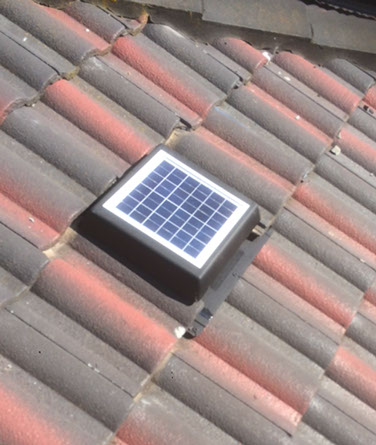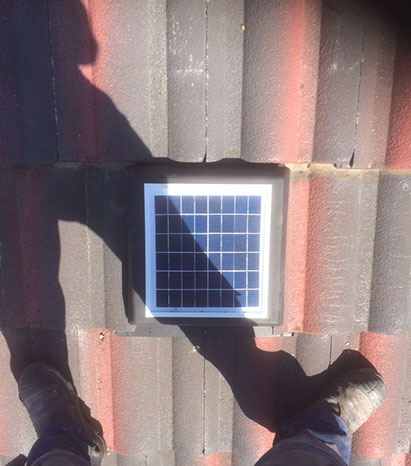


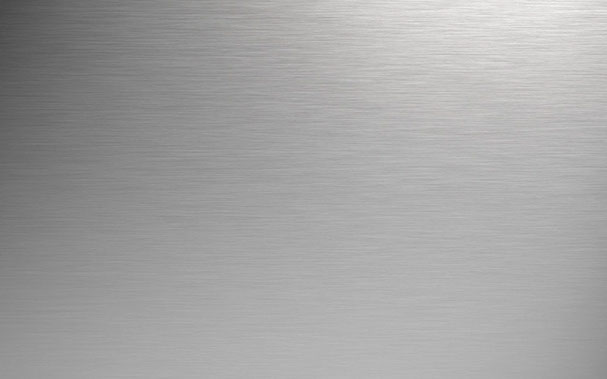






















What style of of buildings are skylights best suited?
How weather-proof are skylights?
If I have a tile roof will I be required to cut the tiles?
What do I do if I am having trouble installing my skylight?
EzyLite skylights are designed to give added light to the interior of virtually any building. Whether it's a home, office or shop, EzyLite Skylights have a style to suit you.
Provided your EzyLite skylight is installed in line with the instructions, our weather-proofing will stand up to the most severe storms. Correct sealing ensures long-lasting protection from the elements.
In most cases it is likely that you will have to cut tiles in order to install the skylight. Although this should be a relatively simple procedure if required; ensure you follow the instructions enclosed to achieve the best result.
Follow the links on this website for detailed installation instructions and guides. Or give us a call on 1800 010 566 and let us offer you some simple advice.
General FAQ
Skylight FAQ
What size skylight do I need ??
How do I install to a tile roof ??
What is the difference between square and round skylights of the same size?
What is the difference between square and round skylights of the same size?
What if I need shaft longer than 2 meters to span my roof cavity?
Who can install my skylights for me?
Will there be temperature increase when I have a skylight installed?
Will I be subject to increased UV radiation if we install a skylight?
What are the benifits of Clear Prismatic Light Diffusers?
Can I get a new diffuser for a broken skylight?
A skylight functions in the same manner as an ordinary window. The larger the area that requires additional light the larger the skylight needs to be to provide that light. Alternately consider multiple skylights for large areas. There are often multiple light fittings in large rooms; Skylights may be used in the same fashion to great effect.
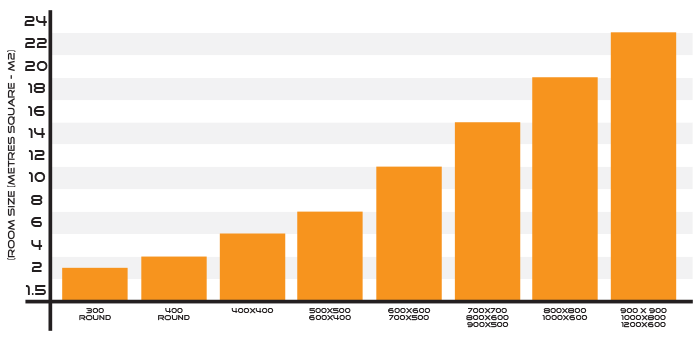
As previously noted the size of the skylight dictates the amount of light which can pass through it. Because of the shape of the skylight a square skylight has a 23% larger surface area than a round skylight of the same dimensions and therefore will allow for the transmission of 23% more light. This additional surface area along with the extra materials required to manufacture the skylight explains any retail variations between the two.
As previously noted the size of the skylight dictates the amount of light which can pass through it. Because of the shape of the skylight a square skylight has a 23% larger surface area than a round skylight of the same dimensions and therefore will allow for the transmission of 23% more light. This additional surface area along with the extra materials required to manufacture the skylight explains any retail variations between the two.
It is always wise to pop your head up into your roof space before deciding what skylight is right for you. While you’re in there just confirm 2 metres of shaft will be sufficient for your needs. If that is not the case additional shaft can always be purchased from your retail supplier.
However, the further the light is required to travel down the shaft the more the intensity of the light which reaches the room below is compromised.
This can be overcome by increasing the size of the skylight. This will allow more light to enter the skylight and thus more light to reach the room below. We would suggest that you increase the size of the skylight by a factor of 100mm for every metre, or part thereof, of additional shaft you need to attach.
EzyLite Skylights are supplied with easy to follow instructions and can be installed by just about anyone. TradeLites do require a little more experience with the tools but most competent home handymen would find them no trouble to install.
Click here for Tile installation instructions
Click here for CGI installation instructions.
It may be wise to employ the services of a tradesman for the roof windows, but an experienced handyman would not be out of their depth. If in doubt contact your local tradesman or home maintenance man.
In regard to temperature transfer when installing skylights, many factors have to be taken into account. Firstly skylights usually represent a very small proportion of the actual roof area. As such they don’t attract large amount of direct radiation when compared to the total roof area. It is also important to remember that while the skylight dome will heat up when directly exposed to a heat source (in this case, the sun) both polycarbonate and acrylic are very poor conductors of heat and therefore the heating of the outside face of the dome results in very little heating of the interior face of the dome.
As a result of this the air pocket created beneath the dome takes a long time to heat up. In contrast to this, both tile and metal roofs are excellent conductors of heat and as such heat the air beneath their surface very quickly. This means that the air in the skylight shaft will often be cooler than air trapped in the roof cavity. Additionally, at the end of the day the polycarbonate or acrylic will cool down at a much faster rate than the roofing material around it. These means any warm air trapped in the shaft will dissipate through the dome very quickly. This dissipation will also cause a small ‘chimney’ effect. Warm air trapped in the room beneath the skylight will rise through a skylight shaft and dissipate into the atmosphere at a much quicker rate than warm air trapped in a room without a skylight.
The layer of warmed air in the roof cavity very slowly dissipating through the tile or metal roof will in essence provide an insulating layer keeping the room beneath hotter for a longer period. For this reason a room with a skylight will cool down at a quicker rate at the end of a warm day.
EzyLite round skylights are a range of budget products in limited sizes. All of these products are manufactured with a molded acrylic dome. This in combination with the diffuser constitutes your “double glazing effect”.
Also consider that on all small domed skylights any heat or cold exchange is minimal. This means the exchange of heat or cold through this skylight would be much less than through a window of equal size. However we do manufacture products that will reduce this exchange even further.
We also supply our SupaLite range of skylights as a premium product. The square and rectangular skylights in this range are topped with a flat dome made of TwinWall Polycarbonate. These products provide in essence a “triple glazing” effect in combination with the diffuser. This type of glazing is only available in square or rectangular units and must be sourced through a custom order.
UV Radiation can be considered a risk to a person’s health when a person is positioned directly in the path of the sun’s rays, or if you are in the vicinity of an environment which may reflect large amounts of these rays towards you. This is not a common occurrence when indoors, however, all of our molded domes are rated as 95% UV resistant and when combined with a ceiling diffuser effectively negates the transmission of UV Radiation.
Clear prismatic diffusers consist of myriads of clear prisms which diffuse the light evenly over a wide area. This ensures the maximum light transmission and effectiveness of the product, while softening the light and nullifying glare.
EzyLite Skylights can replace damaged domes and diffusers for our own products. Just contact your local distributor.
Roof Window FAQ
EzyLite Roof Windows are markedly different from those of our main competitors in a number of ways;
The EzyLite Roof Window PLUS is glazed with 6mm Toughened Viridian ‘SmartGlass’* and comes fitted with a standard fitted nylon flyscreen.
*Viridian SmartGlass is an Australian manufactured energy efficient glass that reflects heat to actively insulate your home’s roof. The unique Hard Low-E coating reflects Australia's notorious summer heat away from your windows, keeping your home cooler. At night or during winter, it reflects heat inward, keeping your home warmer. This reduces your heating and cooling bills year round.
The EzyLite Roof Window PLUS is also available with a high quality solar blockout blind and pleated nylon shadescreen for an additional cost. Both the blind and screen are fully retractable when not in use for a sleek modern finish
The EzyLite Roof Window PLUS can also be supplied with coloured external flashings, meaning the windows are an appealing visual feature when viewed from the outside as well as from inside.
The EzyLite Roof Window PLUS can be supplied with a 240V infrared remote controlled motor for ease of use. This simple Power’n’Play feature makes the window operation simple and convenient. The cordless radio remote is also supplied with a wall mounted bracket ensuring you can always find it when you need it.
Note: A licensed electrician will have to provide a 240V source in your roof cavity.
How does the EzyLite product differ from its competitors?
Will the EzyLite Roof Window fit my roof ?
What are the benifits of using SmartGlass as opposed to standard double glazing ?
Will our home be heated up in summer with the addition of a roof window?
Can I get the exterior flashings to match my roof colour?
How do I install a EzyLite Roof window?
How will I operate windows which are installed out of reach?
Will the Roof Windows allow rain inside if they are open?
Am I able to customize window sizes, glazing options or other features to suit my needs?
EzyLite Roof Windows are designed with a roof specific soaker tray which is fabricated to suit Tile, Corrugated Iron or Deck Profile roofs. These roof profiles are not interchangeable so ensure you order the window type which is right for your roof.
Also note, EzyLite Roof Windows can be installed, without modification, to roof pitches as low as 2 degrees. All Roof Windows will be fabricated to suit installation long side running down fall of roof unless otherwise specified.
Acol’s standard range double glaze is 4mm toughened/6mm Argon/4mm toughened Clear DGU. This glass’s performance criteria ratings are;
UV Transmission= 52; U Value= 2.6; and SHGC = 0.74.
Viridian SmartGlass is an Australian manufactured energy efficient glass that reflects heat to actively insulate your home’s roof. By direct comparison the performance criteria ratings for SmartGlass are;
UV Transmission= 41; U Value= 3.7 and SHCG= 0.53.
The unique Hard Low-E coating of SmartGlass reflects Australia's notorious summer heat away from your windows during daylight hours, keeping your home cooler. While at night or during winter, it reflects heat inward, keeping your home warmer. This reduces your heating and cooling bills year round.

There is always opportunity for heat to pass through any window and enter your home. For this reason EzyLite Roof Window PLUS is available with a blockout blind.
This combined with the Active Insulation Technology of the Viridian Smart Glass means the EzyLite Roof Window PLUS is uniquely designed to offer the best protection for your home and family from the Australian sun.
EzyLite Roof Windows are supplied with a zinc soaker tray as standard. However, at EzyLite we are able to fabricate all exterior flashings out of high grade Colorbond® Steel to match your existing roofing or tile colour. Simply nominate the colour you require on your order. There is a slight additional charge for this option
EzyLite Roof Windows have a revolutionary one-piece frame and soaker tray which is designed to simplify the installation process. Installation to the roof level of any home should be well within the capabilities of any experienced home handyman.
Click here for Tile installation instructions
Click here for CGI installation instructions.
However, it must be remembered that installing your Roof Window to your roof is only half the job.
The interior finishing of the project must also be considered. Many homes will require an interior shaft to be boxed out and plastered. This sort of project will certainly require the involvement of someone with considerable construction experience, if not a qualified tradesman.
Also consider that the 240 volt motor accompanying the remotely operated windows will require access to a standard power outlet.
If you do not have such a power source in a suitable position to operate the window you may need to engage a qualified electrician to provide this outlet.
All EzyLite Opening Windows are designed for ease of use. Our standard model is supplied with a slimline chain operator and winder handle. For windows which are too high for standard operation we also offer a 3 metre extension rod and hook system which is simple to use and inexpensive to purchase.
For ‘state of the art’ operation the EzyLite Roof Window PLUS is available with a high quality 240volt ‘Power’n’Play’ remote motor. Simple, modern and functional options for any home and any budget.
EzyLite Roof Windows PLUS sash and awning system is designed to shed rain, hail and even snow away from the window opening in all but the most extreme weather conditions. We also offer the option an electric rain sensor which operates in tandem with the remote motor.
This can be easily installed on any roof by a qualified electrician. A single remote sensor has sufficient range to operate multiple windows on the same roof top.
The EzyLite Range of Roof Windows are exclusive to our premiere hardware partners and are limited to the standard sizes, finishes and features listed in the point of sale material available in store.
The manufacturer is able to fabricate custom windows to suit the needs of individual customers, however the windows will not be part of the Roof Window PLUS range and, as such, may not be available with the same features or options as our standard range. Price variations may also be applicable depending on the required customization.
SolarLight FAQ
The EzyLite Solar Skylight product is intended to provide an alternative to traditional skylight products, and as such is designed so that the light emitted by the ceiling level diffuser fluctuates with the amount of ambient light outside; in the same fashion that a traditional ‘specular’ skylight would.
For this reason to quote a light production level for this product, using a term such as ‘Lumens’ may be construed as misleading. ‘Lumens’ is a term usually used to designate the amount of light produced by a ‘static light source’, meaning a source of light that does not fluctuate or vary as a result of outside factors.
In the case of the EzyLite SolarLight the light source will vary in a manner directly proportional to the amount of light the solar collector is receiving at any given time. This will mean that on a cloudy day the light panel will give off less light than on a day when the solar collector is receiving direct sunlight.
The measuring of ‘Lumens’ for a product such as the SolarLight can be problematic. When measuring lumens an accurate measurement is only possible when the solar collector is exposed to static light source - which is fundamentally contradictory to the intended use of the product. Also there is no recognized standard for taking such a measurement for this type of product.
EzyLite has undertaken a performance testing regime during which the solar collector has been exposed to a constant 100 watt light source from a distance of 1 metre. Subsequently our ‘lumens’ measurement has then been taken from a distance of 500mm from the light diffuser. Using these parameters we have achieved a repeatable light measurement of 950 -1020 Lumens.
However, as the use of the product in its real life application will expose the solar collector to a wide range of light conditions these measurements are intended as a guide only, and cannot be guaranteed in differing conditions.
What is the light output of a EzyLite SolarLight?
Will I need to cut holes in my roof when installing a SolarLight?
Is there an allowance to connect power to the SolarLight?
When installing a EzyLite SolarLight in a metal roof it will be necessary to drill a small hole of approximately 8-10mm through which to pass the power lead. It is then important to correctly seal around this hole to prevent future water ingress.
When installing the EzyLite SolarLight to a tile roof the power lead can be simply run into the roof cavity by guiding it up under an existing tile.
The EzyLite SolarLight is designed to replicate the functionality of a traditional specular skylight. Because of this the amount of light produced will fluctuate during the course of the day rather than the unit being a constant light source. At night when there is no ambient light outside the unit will produce no light internally.
The product is not designed to be connected to mains power or to be turned on and off at a wall switch like a standard light fitting.
Roof Vent FAQ
The EzyLite Solar Roof Vents are designed as a budget venting solution and as an alternative to the traditional whirly bird product. Their primary function is to create a ventilation process in the roof cavity to prevent the build-up of condensation and moisture which may otherwise damage the roofing structure. This is the identical function to the whirly bird. The primary function of these products is to prevent moisture and heat build-up which may lead to expensive repairs.
When operating under optimal sunlight conditions the 8 watt 200mm Solar vent will extract 11.3 cubic metres of air per minute; while the 5 watt 150mm Solar Vent will extract 5.5 cubic metres of air per minute.
How much air will a solar vent extract from the roof space?
Do I need to install eave vents to work in conjunction with the Solar Vent?
Will pests be able to enter my home through the Solar Vent?
What is the thermostat setting on the Premium Solar Vent?
Where on my roof should I position the Solar Roof vent to maximise its performance ?
The EzyLite Solar Roof Vents are designed to extract air from you roof cavity. As a result of this function they also pull air into your roof cavity to replace the air being forced out. No roof cavity in Australia is a sealed environment. Air gaps exist between tiles, above the lip of roof gutters and in many other places in all roofs. When operating the EzyLite roof vents will pull air into your roof cavity through any number of these existing openings as a matter of course. While some people would prefer to install eave vents in conjunction with solar vents these fittings are unlikely to greatly increase the amount of air flowing through your roof cavity.
When installing a EzyLite Solar Roof vent it is necessary to create a hole in your roofing material, and because the roof vent contains openings through which warm air may be extracted it is possible that some insects or other pests may enter your roof cavity via this opening. However it is important to remember that no roof cavity in Australia is a sealed environment. Air gaps exist between tiles, above the lip of roof gutters and in many other places in all roofs. It is unlikely that a household pest determined to enter your home would bypass the myriad of other potential ingress points in order to seek out a roof vent positioned at the highest point of the house in order to gain entry.
In order to maximize the effectiveness of the Solar Roof Vents it is important that they are positioned on the highest point of the roof. On a corrugated roof this should be with the top edge of the flashing placed beneath the ridge cap. On a tile roof the vents should be located in the second row of tiles from the ridge line. If you are installing more than one Solar Vent try to space them evenly across the roof line.
The Premium model 200mm Solar Vent is supplied inclusive with a functioning thermostat. This thermostat will switch the fan motor on only when the temperature inside the roof cavity reaches the pre-set temperature level. The default setting for these units is 30 degrees Celsius. The unit is also inclusive of a re-chargeable lithium battery which will continue to operate the fan for up to four hours even when the solar collector is receiving no direct sunlight, provided the temperature in the roof cavity remains above 30 degrees Celsius. This battery will be re-charged by the solar panels when they next receive direct sunlight.
Please be aware that while this unit will not actively vent when the temperature in the roof cavity is below the activation point of the thermostat an element of passive venting will still occur at all times.
When installing a Solar Roof Vent to a tile roof the tiles should not be pushed under the cowling. The Solar Roof Vent is designed for the tiles to sit up against the top and side of the upper cowling. Trying to push the tiles beneath the upper cowling will increase the chances of water ingress and potential damage to the vent.
Here is a picture on a Solar Roof Vent installed to your every day standard tile roof.
Which setting do I use when installing the Premium Roof Vent?
How do I install a Solar Roof Vent onto a tile roof ?
The EzyLite Premium Solar Roof Vent is supplied with a functioning thermostat. On underside the installer will find a manual operational switch with 3 settings. The 'OFF' setting is designed as a default setting for shipping only . The 'TEST' SETTING allows the installer to confirm that the unit is functioning correctly prior to installation. NOTE it is important that the solar collector is exposed direct sunlight when testing the unit's operation.
The manual switch should be set to the 'ON' position when the unit is installed. NOTE when the switch is in the on position the fan will not spin unless the thermostat is exposed to temperatures exceeding 30 degrees
*Sample of label
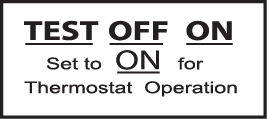
ACOL Skylights & Roof Windows © 2015 Visit ACOLskylights.com.au
